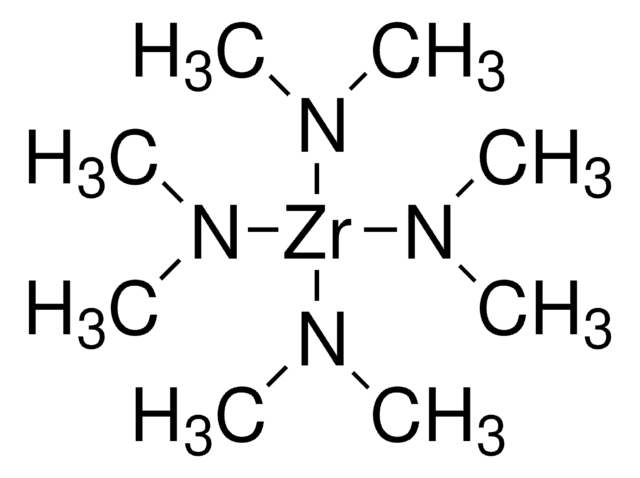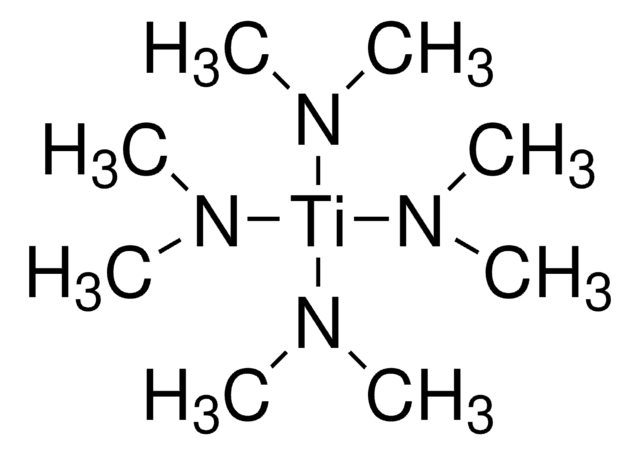725544
Tetrakis(ethylmethylamido)hafnium(IV)
packaged for use in deposition systems
Sinonimo/i:
TEMAH, Tetrakis(ethylmethylamino)hafnium(IV)
About This Item
Prodotti consigliati
Livello qualitativo
Forma fisica
liquid
Impiego in reazioni chimiche
core: hafnium
reagent type: catalyst
P. eboll.
78 °C/0.01 mmHg (lit.)
Punto di fusione
<-50 °C
Densità
1.324 g/mL at 25 °C (lit.)
Temperatura di conservazione
2-8°C
Stringa SMILE
CCN(C)[Hf](N(C)CC)(N(C)CC)N(C)CC
InChI
1S/4C3H8N.Hf/c4*1-3-4-2;/h4*3H2,1-2H3;/q4*-1;+4
NPEOKFBCHNGLJD-UHFFFAOYSA-N
Cerchi prodotti simili? Visita Guida al confronto tra prodotti
Descrizione generale
Applicazioni
TEMAH is well-suited for ALD because its adsorption is self-limiting on a number of substrates including glass, indium-tin oxide(ITO), Si(100), and two-dimensional materials like MoS2. TEMAH also conveniently reacts with either water or ozone as the oxygen-source in the ALD process.
Caratteristiche e vantaggi
- Steel cylinder connected to 316 stainless steelball-valve
- 1/4 inch male Swagelok VCR connections
Avvertenze
Danger
Indicazioni di pericolo
Classi di pericolo
Acute Tox. 4 Oral - Eye Dam. 1 - Flam. Liq. 2 - Skin Corr. 1B - STOT SE 3 - Water-react 1
Organi bersaglio
Respiratory system
Rischi supp
Codice della classe di stoccaggio
4.3 - Hazardous materials which set free flammable gases upon contact with water
Classe di pericolosità dell'acqua (WGK)
WGK 3
Punto d’infiammabilità (°F)
51.8 °F - closed cup
Punto d’infiammabilità (°C)
11 °C - closed cup
Scegli una delle versioni più recenti:
Possiedi già questo prodotto?
I documenti relativi ai prodotti acquistati recentemente sono disponibili nell’Archivio dei documenti.
I clienti hanno visto anche
Articoli
igma-Aldrich.com presents an article regarding the savannah ALD system - an excellent tool for atomic layer deposition.
Nanocomposite Coatings with Tunable Properties Prepared by Atomic Layer Deposition
High Purity Metalorganic Precursors for CPV Device Fabrication
The properties of many devices are limited by the intrinsic properties of the materials that compose them.
Il team dei nostri ricercatori vanta grande esperienza in tutte le aree della ricerca quali Life Science, scienza dei materiali, sintesi chimica, cromatografia, discipline analitiche, ecc..
Contatta l'Assistenza Tecnica.



